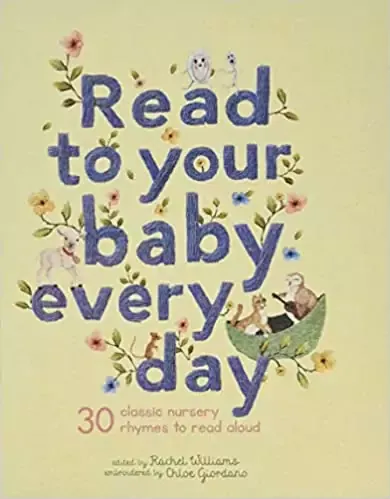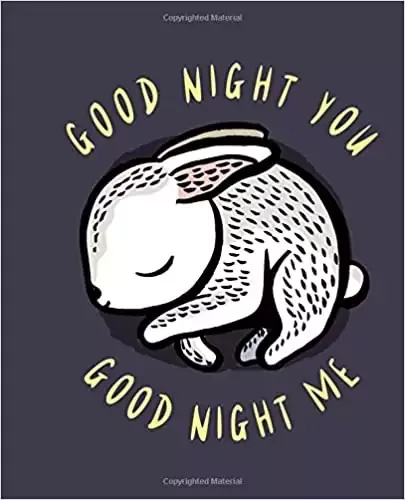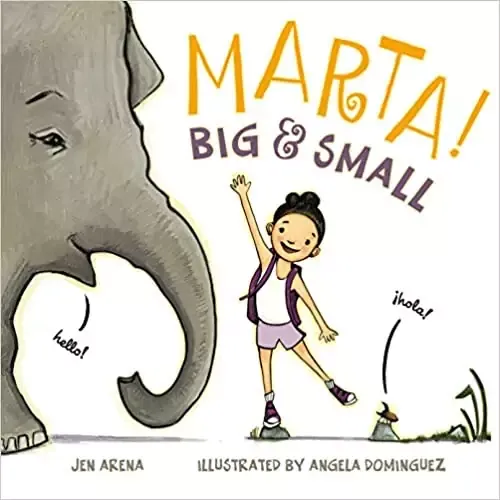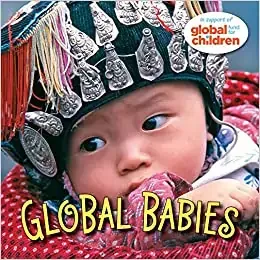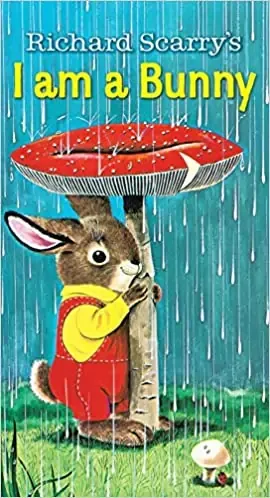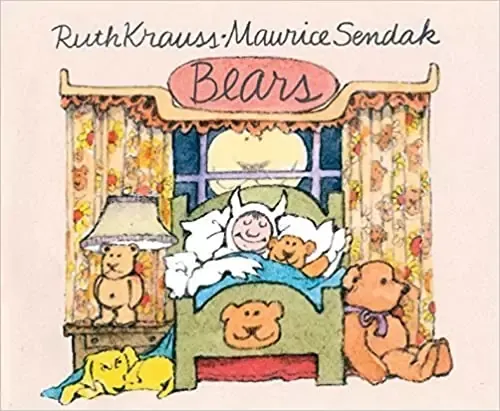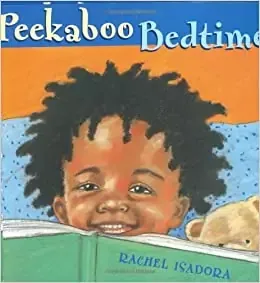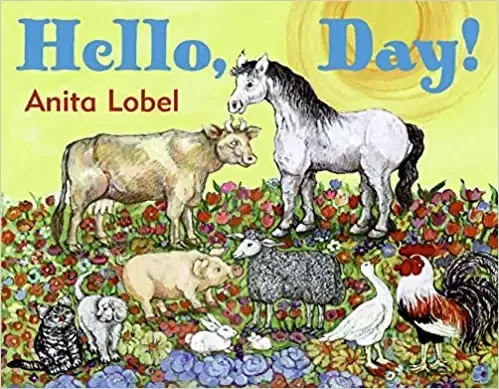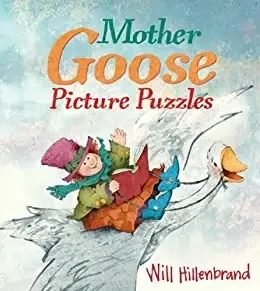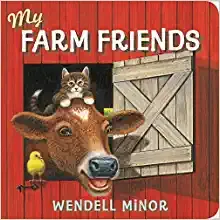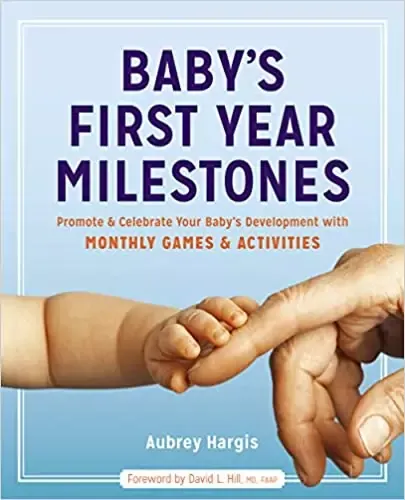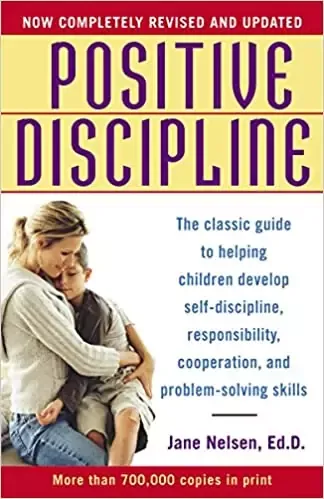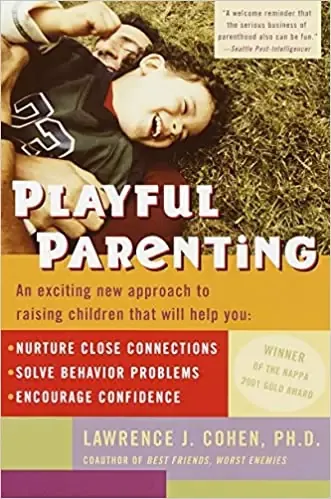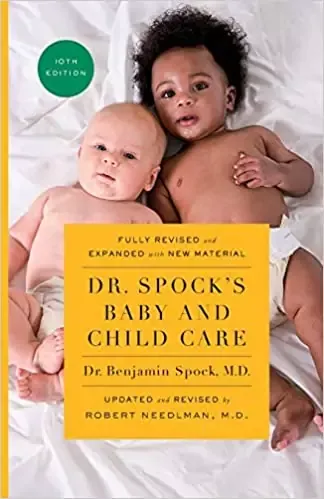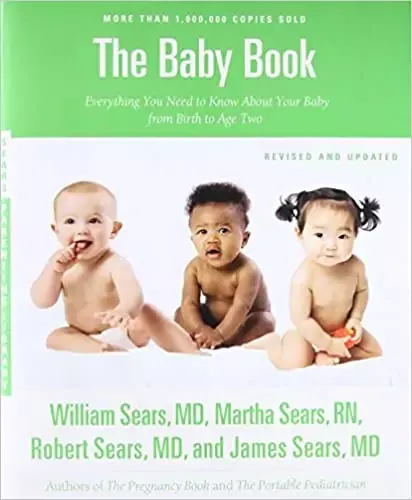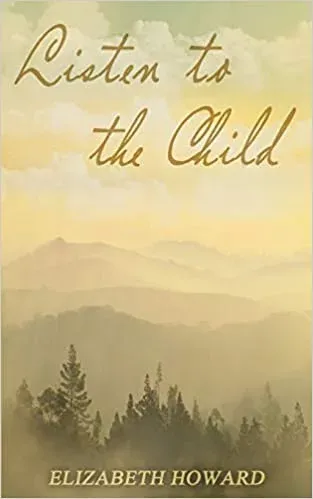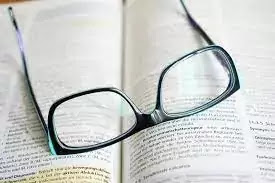14. Baby's First-Year Milestones
by Aubrey Hargis
One-sentence recommendation: "Education and play" are both right
The baby is born, eats, drinks, and sleeps enough, what do you do the rest of the time? Of course, it is for fun! But what can you play with a 0-1-year-old baby? How to play it? It is estimated that many novice parents will be worried.
"Baby's First Game Book" is a popular parenting book in Germany, specifically for babies aged 0-1. It selects more than 100 suitable game suggestions from the popular parent-child training courses in Europe, including Prague parent-child courses. , Exercise your baby's sports, emotional, social, language, and cognitive abilities in an all-around way.
The introduction to the game in this book is concise, complete with pictures and text. Even novice parents are very easy to use. The book not only explains the games suitable for babies according to the age of the month but also introduces the categories according to the goals achieved by the games so that parents can exercise in a targeted manner according to the actual situation of their babies. There is also a tutorial on homemade toys in the book. You can make safe and fun toys using common materials at home, so why not do it!
In addition, the concept of "good parents- let it go" and "replace education with instincts" conveyed in this book is also worth learning.
15. Positive Discipline
by Jane Nelsen Ed.D.
One sentence recommendation: "Parenting Bible" has taken the world by storm
"Positive Discipline" is not a book, but a series of books with the core concept of "Positive Discipline". One of the authors, Jane Nelsen, is a Ph.D. in Education, an outstanding psychologist, educator, a California marriage and family practicing psychotherapist, and the founder of the American "Positive Discipline Association".
Have you ever struggled day and night like me: what kind of love should you give your children? Should it be loose freedom or strict restriction? Should we love unconditionally, or should we use both grace and prestige?
Will full attention lead to arrogance, and will unreasonable degrees of freedom limit the development of children? If yes, then, I highly recommend this book to you. It is this book that tells us clearly: "Mother, you should be kind and firm all the time."
The so-called positive discipline is to teach children lovingly, establish a deep and unconditional emotional connection with them, and help them form a healthy and secure sense of attachment. Its focus is not on severe punishment, but on truly teaching children skills and inducing truly healthy behaviors.
The book talks about a lot of positive discipline tools and techniques, such as diverting attention, counting down, providing options, doing instead of talking, etc., that are very effective. In the daily raising of Nicole, these methods really helped me.
16. Playful Parenting
by Lawrence J. Cohen
When I first saw the title of the book, I was even a little careless. I thought it was a book to teach children how to play. I was wondering why I wrote several volumes on this topic. After I really opened it and read it carefully, I felt my own arbitrariness. Play is also a kind of parenting method, which is different from the previous "decent" parenting method.
This book advocates the establishment of a healthy connection with the child through the "play for him" game method so that the child can interact with others. Lead the game, solve problems, and seek satisfaction and self-confidence. In addition, games can help solve children's daily behavioral problems, allowing children to learn skills without stress and fear. "10-year-old Raymond had trouble falling asleep alone, but during the months of play therapy, he never said anything about it.
Once, when we were playing with pillows, I said that I had to hug the pillow to fall asleep because I felt safe because of that. He snatched the pillow from me and I pretended to cry. He liked this game very much." "Another example is Nancy, who goes to kindergarten.
She is not doing well in toilet training, but she never mentions it. So every time we go to the house, I will let my doll pretend to go to the toilet. , But accidentally peered on the pants." There are so many game cases mentioned in the book.
It is fascinating to read, and it is not boring at all. It is a book that can provide ideas and inspire people. Now, in the process of fighting against Nicole every day, every time I am exhausted and at a loss, I have a new magic weapon, and that is the game. Let's learn and use it together, recommended!
17. Dr. Spock's Baby and Child Care
by Benjamin Spock M.D.
The most reliable parenting manual: "Spock Parenting Sutra" "The Spock Parenting Book" is recognized as the most reliable parenting manual in the 20th century, condensing the "father of parenting" Dr. Spock's effective parenting experience after 60 years of testing. He was once selected by "Time" weekly as "10 books that influence the process of human thought in the 20th century".
Since 1946, the "Spock Parenting Classic" has been continuously revised and supplemented. This book is the latest revised 9th edition, which not only updates the most comprehensive, authoritative, and trustworthy information: such as accidental injuries, common diseases, immunity, behavior Knowledge, and psychological barriers.
Also in response to the focus of attention of parents in recent years, supplemented with content about the growth and development of children, the physical, intellectual, and emotional needs of different ages: such as obesity and nutrition, children and computer games, how to deal with stress Wait.
The newly upgraded 9th edition also rearranges and sorts out all the contents to make the structure more reasonable and easier for readers to refer to.
You can be a competent parent and "trust yourself and your baby".
18. The Baby Book
In a parenting book by American mothers: "Encyclopedia of Intimate Parenting" Dr. William Sears is the most influential parenting authority in the United States. "Sears Intimate Parenting Encyclopedia" has been selling well for more than 20 years, and it still ranks first in the sales charts of parenting books in major bookstores in the United States, and American mothers have one copy.
Based on 40 years of pediatric clinical practice, and the experience of raising 8 children with his wife Martha, combined with the "intimacy theory" of developmental psychology, Dr. Sears has summed up a set of "intimate parenting methods".
That is, through breastfeeding, sleeping with the baby, carrying the baby with a sling, and responding to the baby's needs promptly, parents and children can establish an early intimate relationship so that the children can grow up in a caring environment.
19. Secrets of the Baby Whisperer
by Tracy Hogg
Best practical parenting book:
"Secrets of the Baby Whisperer" The world-famous practical parenting expert Tracy Hogg (TracyHogg) is world-renowned as a "Baby Whisperer". She went deep into the homes of thousands of babies to solve the daily problems faced by babies and mothers through speeches and radio.
TV stations, letters, emails, and posts on her website to communicate with her and ask her for advice are countless. In this book, she gathers her nearly 30 years of experience to explain in detail the effective solutions to the problems of 0-3-year-old babies' feeding, sleep, emotion, education, and so on.
The book consists of 10 chapters. Each chapter revolves around a theme, in chronological order, supplemented by a large number of cases, so that you know what to do at what time, help you become a patient and sober parent, and cultivate a body for yourself. A healthy, regular, and emotional baby.
20. Listen to the Child
by Elizabeth Howard
Parenting Book to Cultivate Children's Healthy Personality:
"Listen to the Child" When the child is crying, when the child is afraid when the child loses his temper when the child is angry... what should we do? What can we do to help the child?
The child’s "abnormal" behavior plays a special role in the child’s growth process. If handled well, it will help the child to form a sound personality and health psychology. This book is the result of years of research and practice by her and her colleagues.
It will provide parents with some very practical methods to help them cope with these often difficult moments; it will also provide parents with some basic ideas to help maintain their parents and children. The precious relationship between.
21. Developmental Psychology
by David R. Shaffer
It is not an exaggeration to say that the practicality of this book is like a reference book and textbook in my mind. Its content absolutely kills 99% of the parenting books on the market.
It is highly recommended that every parent has one. It starts from a small fertilized egg and elaborates on all aspects of infant and adolescent physical development, cognitive development, intelligence, language, emotion, self-concept, gender cognition, and social development.
For example, how does heredity affect a child's development level, how does a newborn baby see, hear, and perceive the outside world step by step, what is the basic learning process in infancy, and how to capture the key to children's ability development Period, when is the accelerated period of brain development, and what is the plasticity of the nervous system...and so on, most of the puzzles about children's physical, psychological, cognitive, and social development, you can read this book a clear explanation is found here.
What is particularly praised is that the book quoted a lot of experimental data and research literature, which makes the whole book more scientific and instructive. What’s more, the professionalism of the content does not affect its readability at all.
You will know it when you read it with your hands. The language organization of the whole book is very popular and smooth. Reading the whole book, The Harvest The clear and clear dry goods are not obscure or boring at all.
22. Caring for Your Baby and Young Child
Raising children is like a mystery to novice parents. Should I have a normal delivery or a C-section? Breastfeeding or formula milk? How much milk do I need to feed each time? How to burp? What should I do if the baby is crying? How to deal with neonatal colic? What kind of vaccine should I get? What should I pay attention to when adding complementary foods? How to wean? How should children deal with colds, fevers, and diarrhea? How to do toilet training? …… Such questions, and even more questions that you can’t even think of.
There are systematic, detailed, and accurate answers in this book. Since Nicole was born, I have never joined a parenting group. Not only is it because of a minimalist lifestyle, but more importantly, this book provides solutions to most parenting problems, and it is more scientific, authoritative, and referential.
This classic parenting book was published by the American Academy of Pediatrics and has been revised and updated many times. I still use 100 points of sincerity and strongly recommend it to every novice parent.
23. Twenty Studies That Revolutionized Child Psychology
by Wallace E. Dixon Jr.
Unlike most parenting books on the market, this book does not guide you on "how", it only tells you "what" and "why". This book is very professionally written, and it introduces in detail 20 classic studies in the field of child psychology.
Like the famous rhesus monkey experiment, the marshmallow delayed gratification experiment, Piaget’s four stages of cognitive development, Vygotsky’s "recent development zone", etc., you can find detailed experimental procedures in this book. , Including samples, materials, experimental content, the performance of the experimental group and the control group, and the final conclusion.
I have always believed that conclusions based on empirical research are more referential than parenting viewpoints based on individual experience. Therefore, this book has long been my favorite.
Unlike the previously recommended "Developmental Psychology", this one is more academically researched and requires a little patience to read, but it gives a lot of enlightenment. It's worth seeing.
24. Thirty Million Words
by Dana Suskind
This is a book to help children learn languages. Although there are some ambiguities in the translation, the flaws are not concealed. This is definitely a good book. I promise, you only need to read a few pages and you will fall in love immediately!
The concept of "
30 million vocabularies" originated from a study of the influence of early childhood language ability training on final academic performance. The researcher tracked 42 groups of families from different economic classes and recorded the growth of the children from 9 months to 3 years old.
The conclusion showed: "Different families have surprising differences in the number of words used by parents when speaking. In three years, for families with a lack of corpus, the cumulative number of words heard by children is 13 million, while for families with a rich corpus, the cumulative number of words heard by children is 4,500. Million, the difference is as much as 32 million. (does not remove duplicates, contains repeated words)"
Regarding how to speed up the process of children's language learning, the book mentions the very useful 4T rule, among which speech scaffolding, speech expansion, and taking turns are the essence it.
25. Parent Effectiveness Training
by Thomas Gordon
This book is a very well-written classic in parent-child communication. I have read it many times over and over again, and each time I read it, I get a different result. The author Gordon pioneered the principle of problem ownership, that is, whoever's needs are not met, then the problem is attributed to him and needs to be solved by him.
(Note: The party that the problem belongs to here does not refer to the party who did the wrong thing) Based on this, PET mainly discusses solutions to three situations: child ownership, parent ownership, and parent-child conflict. The structure of the book is very clear. I have compiled a framework diagram as follows:
The book contains a large number of classic communication cases. I think these communication skills are not only suitable for parents and children but also can be applied to husbands and wives, colleagues, and friends. They are worthy of careful reading. highly recommended!
26. Introduction to Infant Development by Alan Slater
Infants may seem to do little more than eat, sleep, and play. Yet behind this misleadingly simplistic façade occurs an awe-inspiring process of development through which infants make sense of, and learn how to interact with the world around them.
Written by leading researchers in the field, Introduction to Infant Development, Second Edition provides a fascinating insight into the psychological development of infants.
This new edition captures the latest research in the field, with new chapters on perceptual and cognitive development as well as memory development; the text also examines the role of gender, culture, and social class in infant development.
The coverage of language development and motor development has also been revised to account for the latest research.
With enhanced pedagogical features throughout and a new Online Resource Center, Introduction to Infant Development is the ideal teaching and learning tool for those studying this intriguing field.
27. Understanding Your Baby by Ayelet Marinovich
Understanding Your Baby: A Week-By-Week Development & Activity Guide For Playing With Your Baby From Birth to 12 Months
If you've ever wished for a step-by-step guide to supporting your baby's development... Distilled, research-based developmental information paired with simple activities to play with your baby on a week-by-week basis, guiding you and your baby through the first year of life.
There's no such thing as a "how-to-parent" guide - but this book comes close... a rare gem that helps parents feel informed. Learn how to "think outside the box" when it comes to playing - without any of the "mommy judgment" or guilt that often comes along with books (or discussions) on parenting infants.
28. Guide & Grow: Baby's 1st Year by Sharon Drewlo
Guide & Grow: Baby's 1st Year: A Monthly Guide to Development, Milestones, and Activities to Support Baby's Development
The first year of life is one of the most important stages for your baby's brain growth and development!
With over 30 years of experience in guiding parents in their child's development, pediatric occupational therapist Sharon Drewlo brings you GUIDE & GROW: Baby's 1st Year, an easy-to-navigate monthly guide to understanding and supporting your baby's development throughout the first year.
This book provides you with:
- A thorough list of monthly milestones and development in 9 areas: Fine Motor • Gross Motor • Social-Emotional • Self-Help Communication • Cognitive and Play • Visual • Visual-Motor • Sensory
- A wide variety of easy-to-implement activities and strategies each month can be incorporated into daily routines to support the baby's development
- Examples of developmental concerns to discuss with your healthcare provider
- A Baby Development Tracker Template for you to record your baby's achievements and memorable moments
- A page for notes at the end of each chapter - use the notes and tracker to refer to at appointments with your healthcare provider
With GUIDE & GROW: Baby's 1st Year, you will gain a comprehensive understanding of your baby's development and have a wide variety of activities and strategies to help support your little one's development all the way to their 1st birthday!
Conclusion: Best Books on Infants and Toddlers Development
I hope this Best Books for Infants booklist can help more families carry out parents' and children's reading together so that more children can start reading from birth and become lifelong readers! I also hope that more people will take action, read aloud for the children, and hold stories about infants and toddlers!
To let children enjoy reading and like reading, parents nowadays are more and more aware of the importance of Parent's and children's reading. Parent's and children's reading can cultivate children's interest and habits in reading, improve reading ability, and at the same time enhance the emotional communication between Parents and children, timely understanding of children's psychological activities, and provide beneficial positive guidance.
but books suitable for Parents and children reading are also crucial Importantly, although the ReadingAndThinking.com -website has previously shared parenting books and many articles for children's book lovers, for a child in the growth stage, these are far from enough.
In this issue, the editor of '
ReadingAndThinking.com' found another 28 best books suitable for Infants and Toddlers reading.
I hope that parents and friends can choose a few from them, have intimate Parents and children reading with their infants and toddlers, and enjoy the joy of family!


